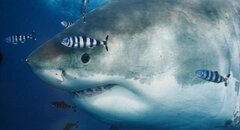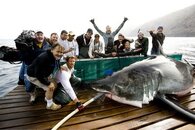Wingy
Contributor
Red tape puts stop to shark barriers - The West Australian The shark barriers we will be using are ready to roll, just a bit of red tape before getting them in place. We have tagged sharks that are giving us information and lots of it - Shark research - plus the stuff CSIRO are doing..agencies co operating together not an outside outfit who are making a documentary. Its not as though we know nothing and need someone to come and teach us how to research our sharks we are doing a pretty good job of it - by alphas story we found out a lot more Great whites prey in ocean marvel - The West Australian
What happens if Ocearch come down here - we end up with a researchers ontop of eachother scenario? Do we need Ocearch? IMO No..the scientists here know what they are doing.
What happens if Ocearch come down here - we end up with a researchers ontop of eachother scenario? Do we need Ocearch? IMO No..the scientists here know what they are doing.






